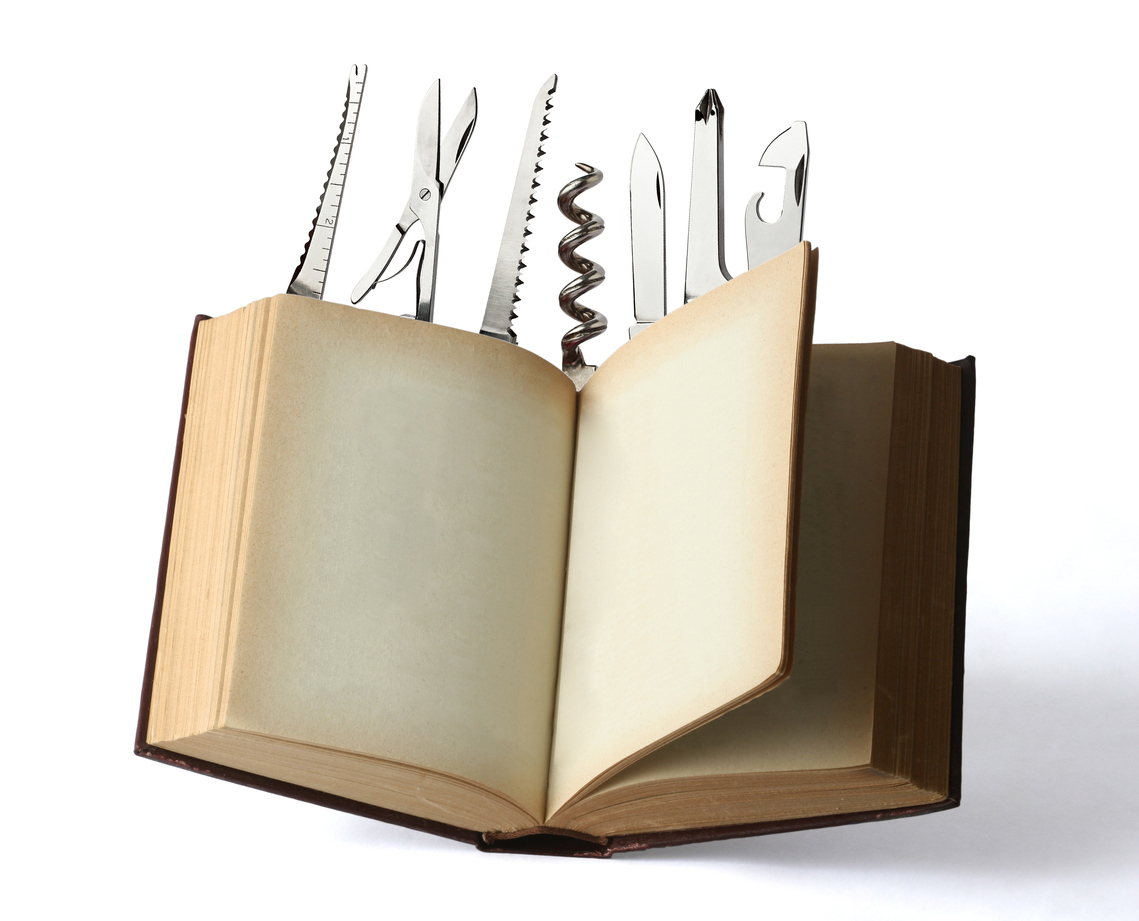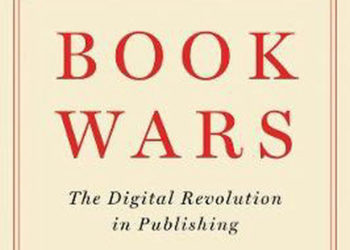To a very great extent, conversations about digital books assume that there could be a direct mapping from the world of print books to digital texts. While this may be true for some books (a novel by Stephen King or Zadie Smith can be read as easily on a Kindle or Kobo reader, a tablet, or an iPhone, as well as in hardcover or paperback), the “book” is not one thing, a homogeneous category. In fact many books are not likely to have precise digital equivalents. This is because the format of the printed book serves many purposes, and the presentation of content is only one of them. The book is multifarious. Here we revisit a 2017 post on the subject.
The Multifarious Book
A few years ago the director of a university press told me that her goal was “to save the monograph.” “Which one?” I responded. It was an impolitic remark, but it helped to make the point that books perform all kinds of tasks, and when we say we want to “save” the book, it is reasonable to ask if some of those tasks could usefully be performed in other ways, ways that are better, faster, and cheaper. And then when we subtract all those tasks, what is left is what the book will be doing in the years ahead. (Note: much of this blog post was prefigured in an essay I wrote for First Monday in 2003.)

This is not the way books are typically discussed, especially when the debate is about the book’s future. Living in the Age of Handwringing as we do, it’s easy to fall in with the conventional thinking that the world is going to hell in a handbasket and the book — or, rather, The Book — is going down with it; indeed, the collapse of The Book may be a contributive factor. In this scenario The Book represents intellectual culture and its demise means that Western Civilization is inexorably sliding into the sewer of Twitter and Instagram. (Journalist to Mahatma Gandhi: What do you think of Western civilization? Gandhi: I think it would be a good idea.) Whatever is the fate of The Book, the book (lowercase) is vital and multifarious. It is being redefined and redirected — and extended.
I was first introduced to the idea of the multifarious book by the late Hayward Cirker, the founder of Dover Publications. Cirker had started Dover out as a reprint house, but he later expanded into a wide range of publications. The Dover juvenile line included what Cirker called “toys within covers.” These were children’s activity tools and games (mostly cut-outs) that just happened to be bound as a book and sold as a book. Why do it that way instead of, say, putting the toys into a box, as one would market Monopoly or The Settlers of Catan? Cirker’s response to this was simple and to the point: he already had a distribution network for books in place and was looking for other products (other book-like things) to put into that channel, whereas Dover did not have a distribution channel into toy stores. If toys within covers disappear in the years ahead, overtaken by some other kinds of toys, whether digital, VR, or physical, would we point to that as an instance of the decline of the book or as something else, something less consequential?
For Kitchen readers who have a personal library that dates back a few years, I suggest you pull some so-called books off the shelves and ask if, in this year, they still seem like books to you beyond the indisputable fact that they are printed on paper and bound together. Let’s start with reference books. An encyclopedia? The 32 volumes of Encyclopaedia Britannica (1996) are sitting on my shelf, but I can’t tell you why: when I want to look up something of a reference nature, I go online, whether to the Britannica site, Wikipedia, or elsewhere. A reference book, in other words, no longer needs to be a book, not even a digital book. Reference material today is created as a Web service: available online, with continuous updating. A reference work, we realize today, was only conceived of as a book as an accident of history (at a particular time and place). The disappearance of reference books costs our culture nothing.
Another example of books that no longer should be books is the database comprised of “former” books. An outstanding example of this is the McGraw-Hill Access Medicine series. Over the last decade McGraw has fundamentally reinvented its professional book publishing, where it was for many decades a market leader, by organizing the books into searchable databases, with links between the components. On top of the database sits a taxonomy to facilitate search and discovery. McGraw, in other words, has learned that those (former) texts were not really books at all but a form of content that struggled with the limitations of its container, the format of the book. That format was at an earlier time the very best container available, but that is no longer true today.
The multifarious book includes collections of essays on a particular topic, a form of publishing much beloved in the university press world. The one-volume collection of essays on a single topic by multiple authors is an excellent way to get a solid grounding on current thinking on a particular topic. Think, for example, of a collection of essays on cybersecurity and the 2016 election, or a volume on fracking, with pieces on environmental issues, the global energy supply, the geopolitical implications, and the often tortured political process that approves or declines a fracking license. There are many problems with this format, however. The first is the stubborn one of finding a sufficient audience to support the publication of such a title, but more important is the skewed rewards system of the academy. Is an author better off personally writing a chapter for a book or writing an article for a journal? It’s unfair, but it is probable that promotion and tenure committees will put a higher value on the journal article. And then there is the matter of distribution: the book may find its way into, say, 600 libraries, but the article may be placed into the marketing context of a Big Deal and instantly be made available to as many as 7,000 institutions around the world, and with the superior search and discovery tools of journals to boot. It seems likely that the multi-author collection of essays will morph into journals, with the superior economics, credentialing, and distribution of journals publishing. Some of this is already happening; see, for example, this publication from Cold Spring Harbor Press.) So how is this a bad thing for the book, which was the wrong format for a collection of essays in the first place?
As you work through your bookshelf, you will find other things that simply work better in a non-book environment. As a rule, anything that is not a linear narrative may be significantly enhanced through even modest digital interventions (search, linking), not to mention the shrinking of a reference work into an app for a mobile phone. Consumer reference material is probably the most affected category. It is hard for me to believe that I carry the complete Merriam-Webster dictionary with me wherever I go, along with the New York City subway map and the timetables for the MetroNorth Railroad.
After we eliminate reference works, various forms of juvenile titles, and content that benefits from continuous updating, what remains is the long-form narrative text, whether it is a work of traditional fiction, a chronologically arranged biography or history, or a sustained synthesis or intellectual argument. Such a text can be readily consumed in print or in a digital format, even in the fairly limited digital formats that are available today (e.g., Kindle apps).
I want to underscore that last point: this is not part of the (now tedious) print vs. digital debate. The book has multiple futures: print, digital versions that are not far from print, and digital forms for which there is no precise print equivalent. As good editors and publishers, it’s important to know the difference and to be able to explain to authors, software developers, librarians, and end-users why certain content belongs in one container and not another. And if we can toss in a comment or two on why all this is cause for optimism about the prospects of humankind, so much the better.
All the handwringing that the book is dead is really directed to the “books that are really not books,” the kind of things enumerated above that were published as books at a time when that was, however inadequate, the most viable format.
This does not mean that a digital version of a long-form text (by which we mean “a book”) won’t draw on digital capabilities; it’s just that these capabilities will be subordinate to the long-form narrative, not a disrupter of it. Digital versions have some attractive properties: the ability to read from a lighted screen, the ability to put an entire library on a single device (and make it searchable), the inclusion of reference backgrounders (e.g., the now-standard built-in dictionary), a wee bit of data-mining (the Amazon X-ray tool), and the in-line incorporation of animations and video. There are many, many more features to come (I believe that annotation capability will be widespread in the coming years), and these will support the long-form text, not compete with it.
All the handwringing that the book is dead is really directed to the “books that are really not books,” the kind of things enumerated above that were published as books at a time when that was, however inadequate, the most viable format. The long-form text, on the other hand, has no real competition outside of the entertainment area, where Netflix and HBO compete with the commercial novel (but not, for the most part, with the literary novel). For all our talk about reduced attention spans, some ideas require space to stretch out in, some areas need extended syntheses. It is a mistake to make a book more like the Web, valuable as Web-like publications are. But they are different kinds of publications. The future of the long-form text, the core meaning of a book, is in making it more like itself.
Discussion
4 Thoughts on "Revisiting: The Multifarious Book"
For scholarly books Robert Darnton pioneered the move to “The New Age of the Book” in his essay of that title in the March 18, 1999, issue of the NYRB. While president of the AHA he convened an advisory group on which I served out of which grew the ideas for the Gutenberg-e and History E-Book projecsts. These projects embodied a vision, first enunciated by Cornell librarian Ross Atkinson, of a multilayered book that could be entered at many different levels, all of which were interlinked. This kind of book could have no print counterpart; the functionality ws inherent to the digital age.
This is really useful! One side context in which “what is a book?” is being discussed is within the Project COUNTER organization, which defines the standards for digital content provider platforms to provide usage data to their (usually library) customers. One piece of metadata we deal with is the “year of publication” (YOP). We are increasingly seeing “books” where different chapters have different YOPs, which would not make sense at all in the print world where a book is printed and copyrighted and the year that is done is the YOP for the entire book and that’s that. At first it was just reference works online where different entries were written in different years, and we librarians discovered the virtues of “subscribing to” rather than “purchasing” a reference work that is constantly being updated. But that model is expanding to works (books? they have ISBNs and are being marketed as books) that are not traditional reference works.
Actually I think most of the current conversation is about digital scholarship and not digital texts. But let’s talk about digital texts. Digital texts famously were made fun of in The Atlantic 1994 article, “The End of the Book,” where they pointed out that digital texts do everything that printed texts do with more costs. Of course I miss those multi-media experiments on CD-ROM that had fixed costs compared to our Internet solutions with their ongoing costs. But anyone who has read Adler’s famous How to Read a Book knows that there is more to books than long-form. There are particular well-defined structures, and they “map” to the kind of book.
Like your 2017 blog post and 2003 essay, I also wrote basically this same article in 2008, presented at the CIKM08: Conference on Information and Knowledge Management, pointing out that the convenience of putting different sorts of things into a paper container called a ‘book’ might start to seem more absurd if we tried to cram all those things into one form of ‘electronic book’.
https://dl.acm.org/doi/10.1145/1458412.1458416


